In today’s bass guitar lesson let's talk about in-ear monitors for bass guitar players...
I’ve had a lot of questions over the past few months about the pros & cons of using in-ear monitors or headphones live on stage. ‘In-ears’ have been common place on big artists for well over 20 years now… however in the past few years this technology has got vastly more affordable.
You can now expect to musicians ditching the big old foldback monitor speaker or wedges in preference for discrete headphones. You’ll now see this from the tiniest club stages, to local churches, to wedding bands, to theatre shows of all sizes...
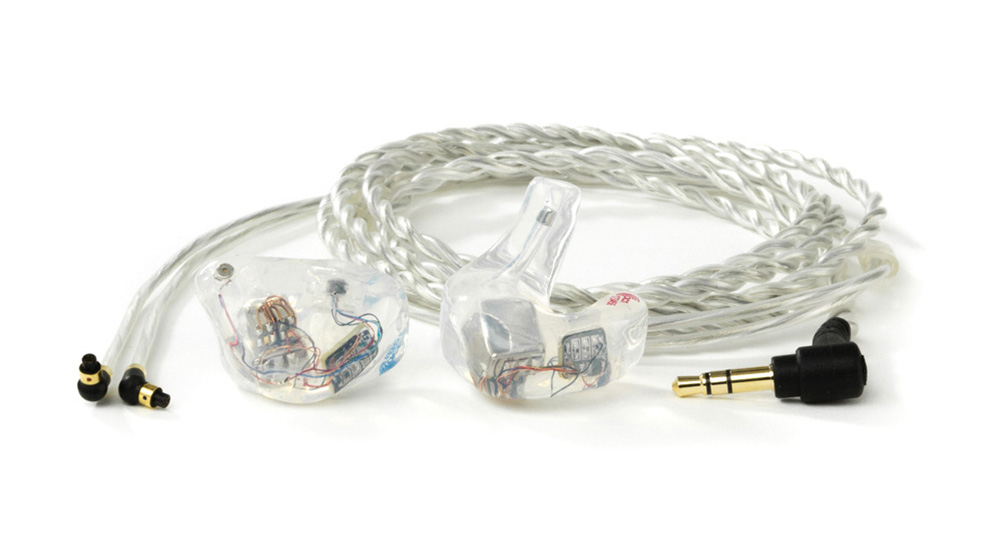
ACS In-Ear Monitors
I’ve used in-ear monitors for bass guitar for about 15 years and it’s safe to say I’m a big fan. Back then in-ears were only an option on the top end professional theatre work I was doing… but now I probably use them on over 80% of the work I do.
For the sake of this article ‘in-ear monitors’ (or in-ears for short) and/or ‘headphones’ refer to ear pieces that sit directly inside the ear canal rather than the traditional ‘over the ear’ headphones.
If you’re interested in experimenting with this technology I want to share 5 tips and 2 bonus tips (which are more personal to me) that help you decide if this approach is for you.
Tip 1 - Be Patient
Using In-ear monitors for bass guitar live is a very different experience to using an amplifier and stage monitors. It can often take musicians time to get used to using this technology because sonically it is a very different sound. I think it took me 2 or 3 months of persistence to get comfortable...
There are two major interlinked benefits of using in-ear monitors:
- Increased clarity & better sound quality
- Reduced stage volume & hearing protection
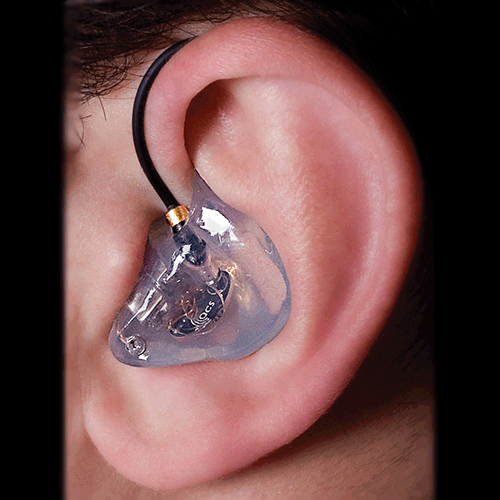
Increased Clarity
Playing with a live band can create considerable on-stage volume and often it can become hard to pick out individual instruments in the mix. In-ears give the musicians a much more ‘controlled’ experience and also strips out much of the effect a room has on the sound of each instrument.
If each instrument is amplified and fed into a mixer, each player can customise his or her own ‘headphone mix’. This means you can control the volume of each instrument and create the perfect headphone sound.
A good headphone mix will always help you play better and inspire you in the process. I find when I can hear each instrument properly I can lock in with the other musicians so much better and respond to their musical ideas. It’s much more rewarding!
Reduced Stage Volume
As we’ve already touched on playing bass with a live band can be very loud! As musicians it’s important we look after our hearing.
Using in-ear monitors will reduce the need for running amplifiers loudly and remove the necessity for on-stage monitor speakers. This will considerably reduce the stage volume.
Reducing the stage volume will in turn help each musician to look after his or her hearing and minimise tinnitus from excessive exposure to noise . There is a big caveat to this: musicians must be conscious to run their headphones at a sensible volume!
The by-product of reducing the stage volume is it will improve the ‘front of house’ sound for the audience. In my experience sound engineers much prefer musicians to use in-ear monitors so they can get a better, more controllable mix out front..
Tip 2 - Use Both Headphones
There are some musicians that can find using in-ear monitors to be a ‘sterile’ experience because it’s more like being in a recording studio than on a gig. Traditional ‘gig sound’ typically feels far more exciting because of the sheer volume and the vibration that comes from the on-stage speakers.
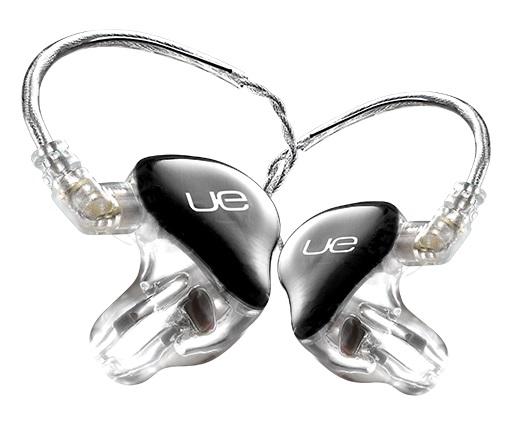
Some musicians try to have the best of both worlds by using ‘one ear in, one ear out’. A good set of in-ear monitors creates a seal that blocks a lot of stage or room noise. This seal can create a sense of isolation from the audience if the player is not used to using in-ears and this is part of the learning process of using this technology.
However, it’s the seal that enables to the bass guitar to sound really good using in-ears. If the seal is broken (even on one headphone) the first thing that goes is the bass or low end frequencies. These are essential for us bass players.
Hearing Protection
There other significant by-product of using in-ear monitors is hearing protection. I use ACS silicone moulded in-ear monitors which offer about 25 decibels noise reduction - which is similar to a heavy duty pair of ear plugs.
If you take a headphone the hearing protection benefits are lost because of the natural stage volume. There are also two other issues you need to be aware of:
To compensate for the loud stage volume you will need to turn the headphone(s) up significantly louder. This will induce a lot of volume very close to the eardrum which could be potentially dangerous.
You will also risk damaging the headphones or blowing drivers when trying to work at much louder volumes. In-ears are delicate pieces of equipment due to the small size of the components.
Tip 3 - Buy The Best Headphones You Can Afford
In-ear style headphones can range from $30 all the way up to $2000+. A $30 pair of headphones will generally be mass produces and will only have one driver (or speaker) to create the sound.
By contrast the $2000 pair of headphones will be custom made or molded to the shape of the musician’s ears and can have anything up to 8 drivers per headphone to create a great sound that reproduces every instrument well.
A live band will have a huge frequency and dynamic range which cheap headphones will struggle to replicate. A little like a fast car with a big engine, the more speakers or drivers a headphone has, the more headroom you will have. This headroom creates a far better sound.
Bass frequencies are always more challenging to reproduce well. I use ACS T1 headphones which are triple driver, cost in the region of $600-$800 and are custom molded to the shape of my ears.
These have always served me very well and I'm very happy with how they sound. I’ve also heard great things about the in-ears which have more drivers… and the audiophile in me would love to give them a test drive sometime 😉

A clear shot of my ACS in-ears!
I’ve seen it quite a few times over the years when musicians have spent many thousands on an expensive bass guitar and amp… but use poor quality headphones.
In my view the most important person that needs a good bass sound is the bass player! That’s because if we hear a great bass sound it will naturally inspire us to play better.
My advice is if you play in a band that uses in-ear monitors for bass guitar a lot... consider using a less expensive amp/cab and invest in a good quality set of headphones. After all… if you use both headphones and DI the bass, the chances are you are more likely to ‘feel’ the speaker cabinet rather than directly hear it (more on that later!).
Tip 4 - Keep Your Mix Simple & Work With The Sound / Monitor Engineer
The ‘mix’ is relative blend of instruments you hear in the headphones. To get the best and most balanced mix, It’s always best to amplify or mic each instrument, including the drums.
Getting a good mix can be challenging and take a bit of practice. The danger is to keep turning everything up and up to try and hear each instrument. If this happens, the mix can often become cluttered, muddy and indistinct… and then it becomes harder to pinpoint how to improve it.
I find it better to create a mix from scratch using these 3 ‘simple’ steps:
Turn the bass guitar up so it’s the loudest thing in the mix. (After all this is the bass mix!)
Add in the drums so each element of the drum kit can be heard well, especially the kick or bass drum. Get that sitting roughly 25% below the bass level. This will give plenty of rhythm / groove to work with.
Then trickle all the other instruments, little by little. If you don’t need to hear instrument (eg backing vocals) there’s nothing wrong with keeping the level very low.
Top TIp: If the mix becomes indistinct try turning down instruments rather than continually turning instruments up. To make an instrument ‘pop out’ often it’s a case of turning down everything else. Sometimes ‘addition by subtraction’ is a much better way to go!
Last of all, create a good rapport with the sound engineer and don’t be afraid to ask for tweaks to your mix. After all their job is to get things sounding good!
In certain situations you may also get given a smaller personal mixer to control your in-ear sound. If this is the case make sure learn how it works and really experiment with what it can do.
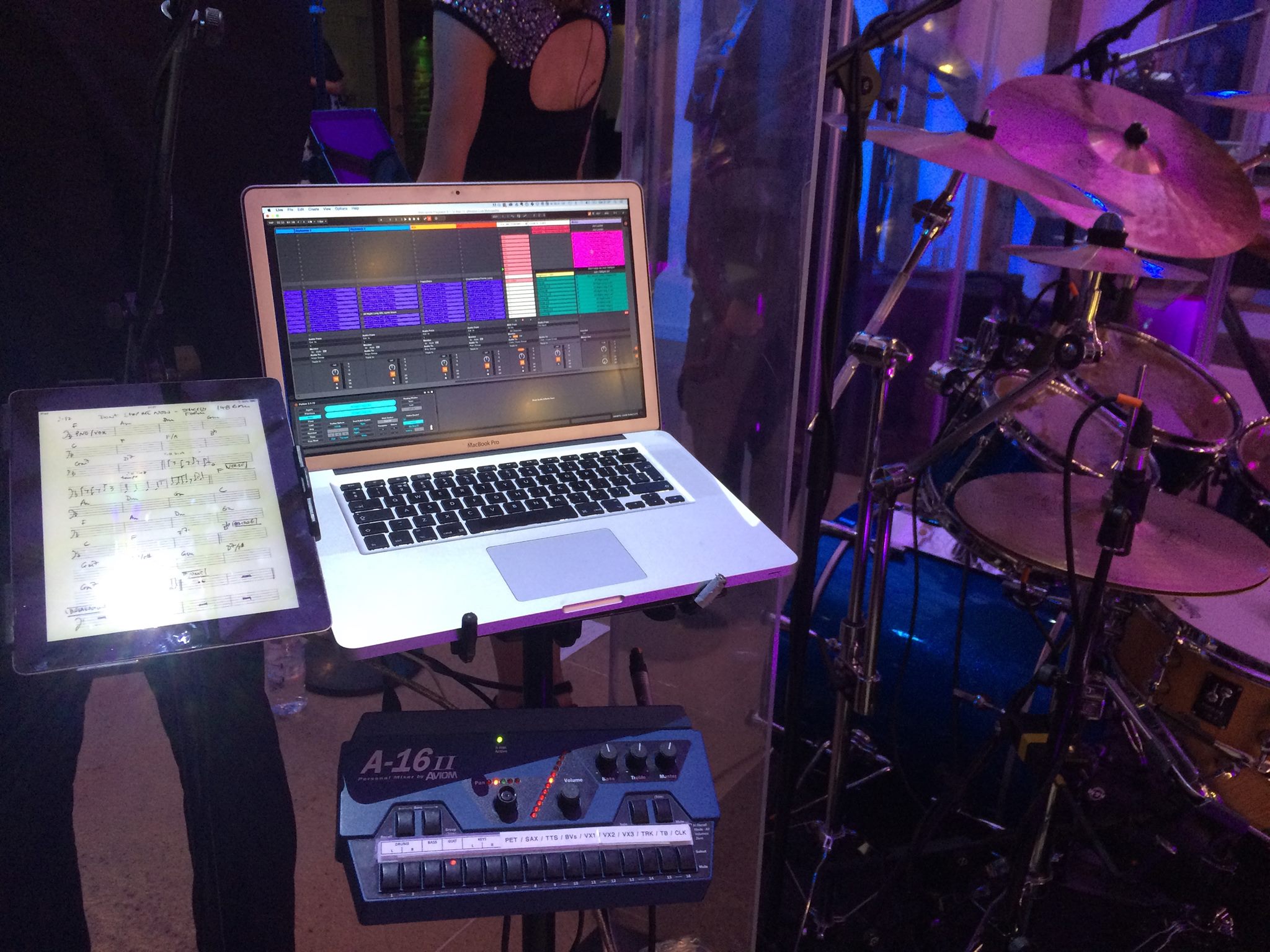
My Aviom Personal Mixer Used In My Band Metropolis
iPads are often becoming more and more popular as so many sound boards are now digital… if you spot your engineer has a digital desk ask him or her if it’s possible to connect a device to the board via WIFI. Most will say yes straight away, as it’s one less mix to worry about!
Tip 5 - Use A Bass Amplifier In Conjunction With In-Ear Monitors
Unquestionably in-ear monitors for bass guitar can work without an amplifier. I’ve done plenty of theatre shows where the sound designers are looking for a ‘silent pit’, so they can really craft and control the sound out front for the audience.
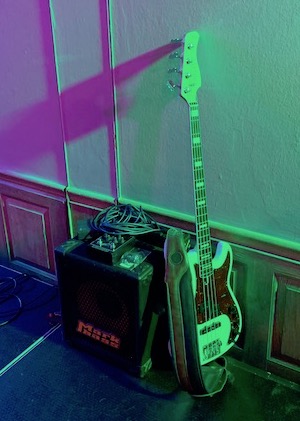
Even a small amp can make a big difference!
However, my preference is to always use an amplifier (where I’m allowed!). The amplifier will help in two main reasons:
- It creates low end bass frequencies.
- It creates stage vibration.
The first reason an amp helps is because in-ear headphones tend to block out the high frequencies rather than the low. This means you can use the amp to create the bass frequencies, rather than the headphones. This in turn means you do not need to drive them so hard.
When using in-ears I always place the amp directly on the stage. The real low end bass frequencies are often felt rather than heard, so having the amp directly vibrating the stage will give a greater sense of bass.
Both of these areas will help give a more ‘live’ and less ‘clinical’ experience.
If I can’t have an amp on stage I will use tend to use an active instrument so I can add bass into the headphones… but there’s always a limit to how much can be added before the drivers start to distort.
One last option is to use a bass shaker or butt kicker. These are devices that vibrate to give the sensation of bass and highly effective. British company Porter and Davies have created a vibrating platform especially for bass players. Here’s a Bass Player Magazine article which tells more…
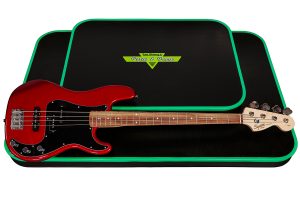
Bonus Tip 1 - Use A Bass Preamp DI
In these last two bonus tips, I want to share a couple of things that have worked really well for me when using in-ears. These a both supplementary pieces of equipment which I have found really helpful but are essential to begin with.
In my experience, even the smallest tweaks to an in-ear monitor mix can have a dramatic effect. I find they are much more sensitive than regular stage monitors or wedges.
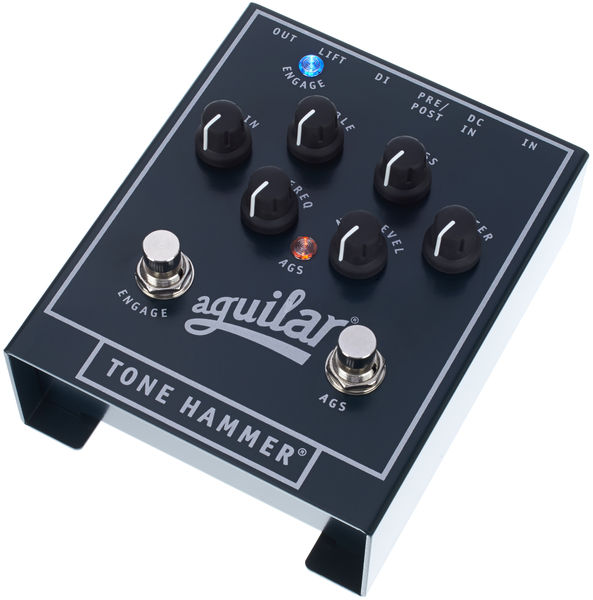
Hence, I really like being able to tweak my sound at source and using a Bass Guitar Preamp DI box can create extra control. Just being able to notch the gain control up or down during a gig can make a huge difference.
I always encourage working as closely as possible with the sound engineer but if he or she has a lot of mixes to look after this can be an effective way of adjusting your bass sound. But… be careful not to go overboard as significant changes will affect the front of house mix and everybody elses onstage sound.
My preferred preamp / direct box is the Aguilar Tone Hammer 500
Bonus Tip 2 - Carry Your Own Headphone Amp
Over the past 3-5 years the functionality of PA equipment and more specifically sound boards has gone through the roof and become more and more inexpensive. In parallel good sounding, high quality equipment has got smaller, lighter and more powerful.
The change I’ve noticed is virtually all of the gigs I do now will have a sound man who will have some kind of digital sound desk and will amplify all of the band.
This means they will often have the scope to give you an in-ear monitor mix or feed. So I always carry my in-ear monitors and a small headphone amp to each gig... so I can plug into one of the outputs of their sound board.
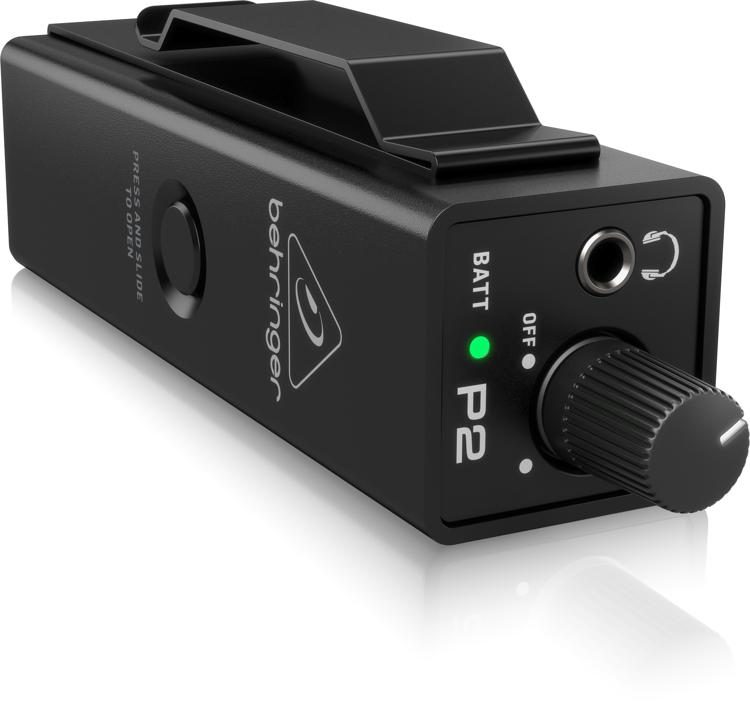
There is this assumption sometimes that all in-ears need to be wireless. That may be true for singers who often need to move but for a bassist who is ‘cabled’ in to the amp to begin wired I find a wired connection absolutely fine. If anything I find the wired sound quality better because certainly with cheaper wireless technology there can be interference and tone loss.
This strategy can be especially powerful if you are in a bad sounding room and are having trouble getting defined bass sound. If you can't hear yourself properly the tendency can be to turn up the volume. This will often cause other musicians to do the same and then the drummer may play that little bit louder. So the stage volume creeps up and up, causing each instrument to get less and less defined.
I carry a Behringer P2 which costs about $50.
Lesson Wrap Up
As I openly declared at the beginning of this article I’m a massive fan of in ear monitoring!
Using this technology has enabled me to enjoy gigs acoustically terrible venues (such as old churches with hard walls that were never built for amplified music), hear each musician better and look after my hearing in the process.
The learning curve was significant but I’ve heard it so many times... once you get there you’ll never go back. I can vouch this is completely true!
Good luck!
James
Recommended In-Ear Monitor Brands
There are now quite a few companies making ‘off the shelf’ generic in-ear monitors and custom molded in-ear monitors.
Custom monitors will require you to get ‘impressions’ created by a local audiologist. These can then be sent to a company anywhere in the world to have the headphones or ‘molds’ made.
Because of the bespoke nature of in-ear monitors it’s often hard and expensive to test multiple brands. To compile a list of recommended brands I’ve asked a group of trusted professional musicians what they’d recommend.
Here’s what came back in alphabetical order:

